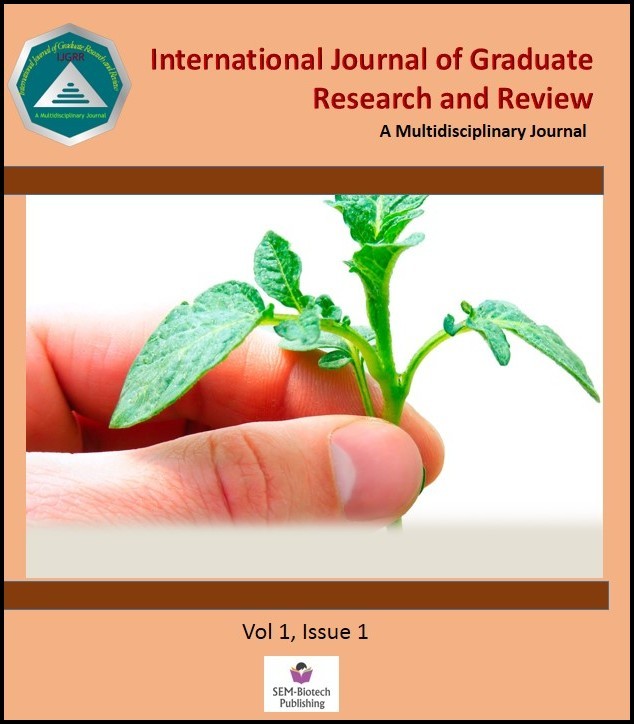





Different Approaches for Management of Brown Spot (Helminthosporium oryzae) Disease in Rice (Oryza sativa) in Nepal
Nabin Pandey*, Chiranjivi Sharma1
1Department of Plant Pathology, Agriculture and Forestry University, Rampur, Chitwan, Nepal
Nabin Pandey*, Chiranjivi Sharma1
1Department of Plant Pathology, Agriculture and Forestry University, Rampur, Chitwan, Nepal
Abstract
Worldwide, more than 3.5 billion people depend on rice for more than 20% of their daily calories intake. Rice is suffering from several fungal diseases among them brown spot caused by Bipolaris oryzae is important. Rice brown spot is a chronic disease that affects millions of hectares of rice. Cochliobolus miyabeanus (formerly known as Helminthosporium oryzae) is a fungus that causes brown spot disease in rice. This disease was the causal agent of the Bengal famine of 1943 that usually occurs on the host leaves and glume, as well as seedlings, sheaths, stems and grains of adult host plants. The severity of this disease is increasing rapidly that cause huge loss in yield. Different approaches can be implemented for management of brown spot in rice. Fungicides, such as iprodione, propiconazole, azoxystrobin, and carbendazim are effective in management of brown spot disease. Poonam variety showed the maximum disease severity of 51.47% and Kabeli show the lowest disease severity of 24.94%. Among the different fungicides, (Propiconazole 25 EC) at the rate of 2 ml/lit water showed significantly lowest AUDPC value. Our study primarily focused on management of brown spot of rice in Nepal through different approaches that are relevant to present situation of farmer.
Keywords: Brown Spot; Bipolaris Oryzae pathogen;Trichoderma, fungicide
Worldwide, more than 3.5 billion people depend on rice for more than 20% of their daily calories intake. Rice is suffering from several fungal diseases among them brown spot caused by Bipolaris oryzae is important. Rice brown spot is a chronic disease that affects millions of hectares of rice. Cochliobolus miyabeanus (formerly known as Helminthosporium oryzae) is a fungus that causes brown spot disease in rice. This disease was the causal agent of the Bengal famine of 1943 that usually occurs on the host leaves and glume, as well as seedlings, sheaths, stems and grains of adult host plants. The severity of this disease is increasing rapidly that cause huge loss in yield. Different approaches can be implemented for management of brown spot in rice. Fungicides, such as iprodione, propiconazole, azoxystrobin, and carbendazim are effective in management of brown spot disease. Poonam variety showed the maximum disease severity of 51.47% and Kabeli show the lowest disease severity of 24.94%. Among the different fungicides, (Propiconazole 25 EC) at the rate of 2 ml/lit water showed significantly lowest AUDPC value. Our study primarily focused on management of brown spot of rice in Nepal through different approaches that are relevant to present situation of farmer.
Keywords: Brown Spot; Bipolaris Oryzae pathogen;Trichoderma, fungicide
Full text: PDF
Int. J. Grad. Res. Rev.Vol-5, Issue-3: 190-193



